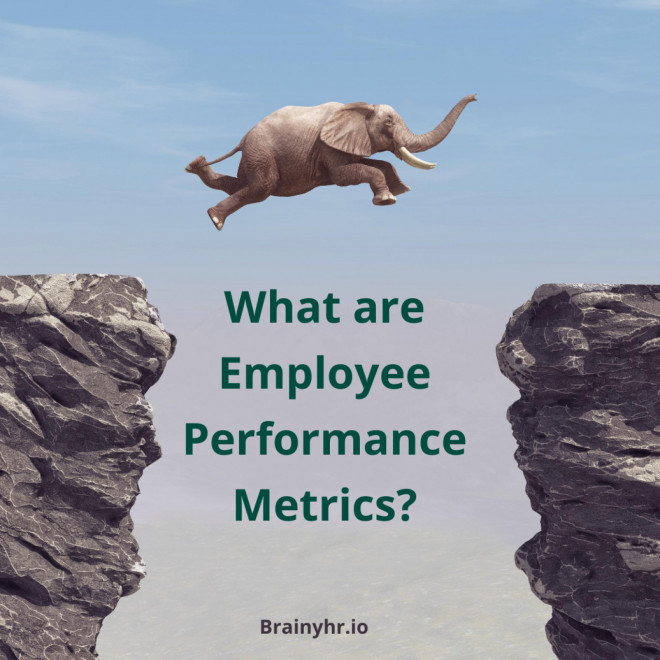Each process must have its own result. Therefore, it is very important for companies to have a corporate system for measuring employee performance. Measuring employee performance is important not only to the business but to every team member. After looking at his professional results, a specialist can see his mistakes and understand what to work on. This process will help him grow, develop and achieve professional success.
Therefore, today, in order to make strategically important correct decisions and be a highly effective organization, it is necessary to measure the individual results of each employee and the team as a whole.
There are many methods of tracking the performance of your employees. The most effective system involves using a performance appraisal dashboard that centralizes all your data and makes it easy to access a clear, real-time view of how people and teams are performing in your company.
Employee performance metrics are a form of workforce analytics used to track employee performance. These metrics are extremely important to track for any organization that wants to be successful.
The employee performance metrics you use in your company will ultimately depend on your industry, the size of your company, and your overall business goals. But the most common criteria are:
- Speed and efficiency of employees;
- Quality of work;
- Trust and consistency.
The Main Employee Performance Metrics
Not all specialties have clearly measurable results of their work. For example, agree that customer relationship management is difficult to measure. However, in order to remain competitive and technologically advanced, it is necessary to strive for performance measurement where it is really possible.
An effective approach is to identify the most important quantifiable employee performance indicators that can be applied to a targeted methodology and combine them with performance measures that encourage proactive problem-solving, creativity, and innovation.
In this way, you create a toolkit for working with the performance indicators of your employees, thereby creating an even more controlled and predictable situation in the company.
Keep a list of the most important metrics that will allow you to measure the performance of your employees.
Metric#1: Initiative
This indicator will help you see the real picture of whether your employees are proactive. After analyzing the results, you can answer the question "Are your employees sufficiently motivated and proactive?" Are they interested enough in their work to go beyond their duties and offer their ideas?”.
An employee's effectiveness and interest in his work often depend on initiative. Therefore, it is very important to measure this indicator, because it can often affect the overall result of the team and your business as a whole.
Metric #2: Goal-based metrics
This indicator is also extremely important. After all, its essence is to achieve goals for the development of the entire company at the same time by setting individual goals for each employee. For example, in a company, each sales representative has his own sales plan, and the team's main goal is to increase sales. As a result, by measuring and improving their results, the sales representative increases sales and develops, grows in terms of financial indicators and career, and the company receives more profit.
Therefore, apply the practice of correct delivery and achievement of goals by employees in your company. For this, you will need:
- Agree on a plan to achieve individual goals. First, align team goals with company goals. Team goals should be based on the team's purpose. Then define part of the team goal for the employee so that the employee clearly defines their goals.
- Involve employees in setting individual and collective goals. This will create a lot of interest and guarantee that the goals are realistic and clear.
- Set measurable goals. The main rule that applies to setting and working with goals is that they should be measurable and specific because you need to know under what conditions you will understand that you have achieved the desired goal.
Metric #3: Quality
The quality of employees' work is vital for the survival and development of the entire organization.
Quality indicators should correspond to the type of work performed by the employee. For customer-facing staff, a metric like Net Promoter Score (NPS), which measures how likely a customer is to recommend a company, is best suited. In addition, the indicator of the quality of work can be determined using:
- 360-degree feedback. A useful approach to determining quality measures, 360-degree feedback involves the manager soliciting information about the employee from colleagues, subordinates, and others who have had significant work interaction with the employee, even customers. This feedback paints a more complete picture of the employee while capturing a measure of quality that is difficult to quantify for some positions.
- Feedback to the manager. This method involves an approach where the employee's immediate supervisor should provide ongoing performance feedback in regular one-on-one meetings. Ideally, such meetings can take place every week. In these sessions, the manager should highlight examples from the previous week that capture what the employee did well as well as areas for improvement.
Metric #4: Training & improvement
Investing in your team through training programs and ongoing skills development is essential to maintaining the team's ability to continue to excel in today's competitive and rapidly changing environment. However, not all companies think to include these training investments in employee performance metrics.
One way to do this is to assess whether employees are using what they have learned. This is achieved by comparing their performance rating before and after training.
For example, observe your sales managers after some training. Perhaps they have increased sales or have become more confident in their pitch. After that, you will be able to conclude how much your employees are inclined to learn and develop new skills.
The application of different approaches to training is particularly important for improving the competence of employees in other areas of activity, such as efficiency.
Metric #5: Effectiveness
The level of effectiveness of employees is how well they can solve challenges at work. The higher the efficiency of co-workers, the better innovations are implemented in the company.
The effectiveness is related to creativity. But this is not the same creativity as, for example, creating an advertising video. Creativity can consist of the ability to find non-standard ways out of problems. And besides, highly effective employees are constantly improving their productivity to achieve success.
There are many ways to evaluate performance. But the most common ones include measuring an ability to prioritize, consistently achieve goals, and meet deadlines.
Measure the performance of your employees so that you have the opportunity to control the entire process of developing your business. After all, your team's efficiency is extremely important for the company's development.
Summary
It is impossible to find a single formula for measuring productivity. After all, it does not exist. Because productivity is a combination of many quantitative and qualitative indicators. In practice, many companies try to measure absolutely accurate performance using the 360-degree method. However, even this technique will not provide an opportunity to comprehensively measure the productivity of employees.
That is why automated HR systems are so relevant now. HRIS is an innovative tool that will help you comprehensively and qualitatively measure the productivity of employees in your company.
By the way, we have updated the design of our Brainy HR software to make it even more pleasant and easy to use.
Sign up today and get access to the demo today for 1 month and experience the power of innovation.
And remember, technology is the future.


 Posted on Nov 2, 2022 by Lillia
Posted on Nov 2, 2022 by Lillia


